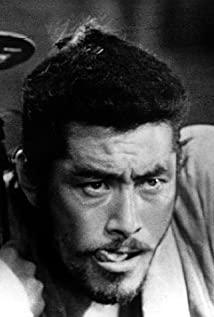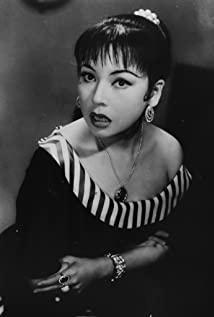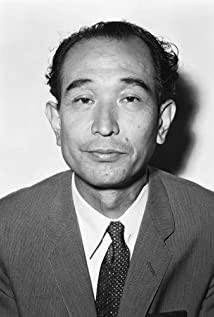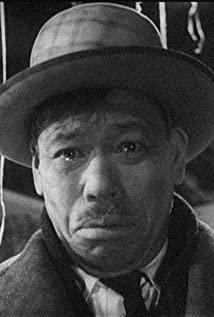Rashomon, one of the masterpieces of Japanese master director Akira Kurosawa, was released in 1950. The film, starring famous actors at the time, Toshiro Mifune and Takashi Shimura, tells the scene from different perspectives of the murderer, the victim, and bystanders in a murder in the woods. Through mature photography techniques, the atmosphere of the whole film is confusing and even brings a bit of weirdness, and with the soundtrack of the same atmosphere, it can make the audience immersed in it. The religious metaphor of the word "Rashomon" means "the connection point between the world and hell", "the gate to hell", and it also refers to the different views in the minds of different people in a case where the truth of the case is extremely vague.
At the beginning of the film, the picture of "Rashomon" is presented in front of us. While pointing out the theme, it reminds us of the "Rashomon" incident. At this time, some people may be able to perceive that the film will not be simple. Then the director began to borrow the words of the woodcutter character in the film to start the narrative. The picture begins to cut to the scene where the woodcutter recalls his chopping wood, and the camera is directly facing the fiery red and dazzling sun to explain the time. The picture when the woodcutter is walking uses a lot of semi-subjective shots. The sweat on the woodcutter's body in the picture Even the audience felt a touch of heat. Coupled with the slightly weird soundtrack, the audience will be interested in trying to figure out the next second of the picture. Later, multiple cameras were used to present the scene of the murder in front of the audience, but the whole body was not depicted frontally (only a pair of pale arms appeared), which undoubtedly added a suspenseful atmosphere.
At the beginning of the film, the picture of "Rashomon" is presented in front of us. While pointing out the theme, it reminds us of the "Rashomon" incident. At this time, some people may be able to perceive that the film will not be simple. Then the director began to borrow the words of the woodcutter character in the film to start the narrative. The picture begins to cut to the scene where the woodcutter recalls his chopping wood, and the camera is directly facing the fiery red and dazzling sun to explain the time. The picture when the woodcutter is walking uses a lot of semi-subjective shots. The sweat on the woodcutter's body in the picture Even the audience felt a touch of heat. Coupled with the slightly weird soundtrack, the audience will be interested in trying to figure out the next second of the picture. Later, multiple cameras were used to present the scene of the murder in front of the audience, but the whole body was not depicted frontally (only a pair of pale arms appeared), which undoubtedly added a suspenseful atmosphere.
When narrating the process of the case, the director did not portray the judge's appearance directly, but directly showed the judge's perspective from the subjective lens, allowing the audience to act as the judge. It is intended to make the audience think. Every audience can examine the case, and everyone can have different judgments, but everyone's judgments may not be completely correct, and it also makes the audience more immersed in the plot. The trial begins with the robber, Tajomaru's point of view, narrating the case. Most of the images at this time are from an upward angle, which fully reflects the arrogance in Tajomaru's eyes, and in the subsequent fights with samurai can also see his own glory in his eyes. prestige.
The second part of the trial process unfolds from the perspective of the samurai's wife. At this time, most of the pictures are turned at a downward angle. After the narration, the audience gradually finds that there are many conflicts with Tajomaru's testimony, and the meaning of "Rashomon" is revealed again. From the perspective of the samurai's wife, he is the weaker party, and the language of the camera at this time also makes the audience realize that there is a trace of falsification in the witness's testimony.
The third part is told from the perspective of the deceased himself, the samurai (wizard conjuring). At this time, the plot seems to have undergone a 180° reversal. The camera turned to the objective perspective of the samurai at this time. Most of the pictures at this time were transformed into panoramic and distant views, and most of the pictures were the memories of the samurai himself from a subjective perspective. At this time, his statement is different from the former. Therefore, the samurai is not only an observer but also speaking from his own standpoint.
After these three conflicting confessions, the director cuts the picture to the "objective" perspective of the woodcutter. At this time, the camera position has been turned to a higher angle than the previous position, showing its voyeuristic observer's perspective. In the woodcutter's perspective, the scene of the fight between the samurai and Tajomaru is shown in the picture of two cocks facing each other. Pecking is not only a contrast to the majestic self in the eyes of Tajomaru, but also a strong contrast to the fighting scenes described by the previous three people, showing the description made by the woodcutter due to his short-sightedness.
The pictures from the perspectives of the robber Tajomaru, the samurai's wife, and the samurai form several small frames, and the woodcutter's observer's perspective forms a large frame to "summarize" the entire case, and finally forms a larger frame from the audience's (judge) perspective. The frame surrounds it all. Multiple plots are intertwined, but the final truth is unknown, which makes us sink into this confusing case, but even the detective cannot know the original appearance of the case.
Under this Rashomon, what the truth is has long since become unimportant. Everyone's testimony is biased towards their own subjectivity. What you think in your heart will be what you see. And the real picture has long been buried by time and forgotten by us.
This leads me to ask one of the big questions in the film: what can we believe in these days? I only hope that the child who represents the last hope can enter an era with a new look under the light of the sun, and no longer follow the old path of the predecessors.
View more about Rashomon reviews











